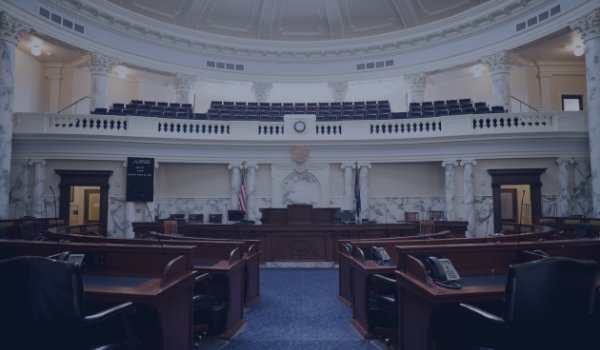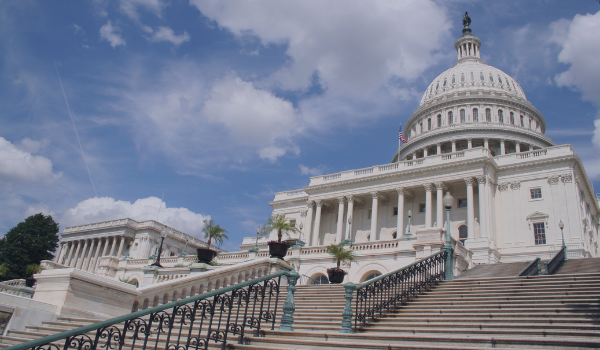On March 29, 2022, the House of Representatives, by a vote of 414 – 5, passed the Securing a Strong Retirement Act of 2022 (H.R. 2954), also known as the Secure Act 2.0. The legislation now goes to the Senate to be reconciled with a similar piece of legislation, which is currently pending in the Finance Committee.
The Secure Act 2.0 includes many provisions designed to enhance the retirement savings of American workers. The following is a discussion of some of the more salient provisions.
1. Automatic Enrollment
Section 101 of the Secure Act 2.0 amends the Internal Revenue Code by inserting a new section 414A, which provides that no 401(k) plan shall be treated as a qualified plan unless it provides for automatic enrollment.
The automatic enrollment provision requires employers with eleven or more employees to automatically enroll an employee in the employer’s 401(k) when they become eligible. The employee may subsequently opt-out of participation in the plan. But this changes the normal procedure for most 401(k) plans where employees are required to affirmatively elect to join the plan. The deferral amount must be at least 3%, although an employer can choose a greater deferral amount. In addition, the deferral amount increases by 1% each year until it reaches 10%.
The automatic enrollment provision is effective for plan years beginning after December 31, 2023.
2. Start-Up Credit
The Code currently provides a credit to certain employers that adopt a qualified retirement plan to help subsidize start-up costs. The current credit is 50% of the administrative costs for the first three plan years up to a maximum of $5,000 per year. Section 102 of the Secure Act 2.0 increases the credit for employers with 50 or fewer employees. The credit for those employers is increased to 100%.
Section 102 of the Secure Act 2.0 also adds a new credit for any plan other than a defined benefit plan. The amount of the new credit is a percentage of the amount that the employer contributes to the plan up to $1,000 per employee. The full credit is available for employers with 50 or fewer employees. It is phased out for employers with 51 – 100 employees. The applicable percentage is 100% in the first and second plan years, 75% in the third plan year, 50% in the fourth plan year, 25% in the fifth plan year and no credit for subsequent plan years.
The provisions of section 102 of the Secure Act 2.0 are effective for plan years beginning after December 31, 2022.
3. Increase in Age for Required Minimum Distributions
Participants in a qualified retirement plan are required to begin taking distributions from the plan at a certain age. Currently, a plan participant is required to begin taking distributions by April 1 of the calendar year after the later of the calendar year in which the plan participant attains age 72 or retires.
Section 106 of the Secure Act 2.0 increases the age when a plan participant must begin taking required minimum distributions. For a plan participant who turns 72 after December 31, 2022, and age 73 before January 1, 2030, the applicable age is 73. For a plan participant who turns 73 after December 31, 2029, and age 74 before January 1, 2033, the applicable age is 74. For any plan participant who turns age 74 after December 31, 2032, the applicable age is 75.
Section 106 becomes effective for distributions required to be made after December 31, 2022, for any plan participant who turns 72 after December 31, 2022.
4. Catch-Up Contributions
There are three provisions in the Secure Act 2.0 that affect catch-up contributions.
Section 107 of the Secure Act 2.0 indexes the catch-up amount that an individual may contribute to an IRA. Currently, any individual who is 50 years or older can make a catch-up contribution to an IRA in the amount of $1,000. That amount is not currently indexed for inflation. For plan years after December 31, 2023, the catch-up amount will be indexed for inflation.
Section 108 of the Secure Act 2.0 increases the catch-up amount that certain employees can contribute to their 401(k) plans. For 2021, employees over the age of 50 can make a catch-up contribution of $6,500. Under the amendments made by section 108 of the Secure Act 2.0, employees who turn 62, 63 or 64 after December 31, 2023, will be able to increase their catch-up contribution to $10,000, indexed for inflation. This increase does not apply for any taxable year in which an employee turns 65.
As we all know, what the government giveth, it can also take away. Section 603 of the Secure Act 2.0 is one of the revenue-raising provisions in the bill. It provides that, for taxable years after December 31, 2022, catch-up contributions shall be treated as Roth contributions. This means that they are no longer pre-tax contributions. But it also means that withdrawals will not be subject to income tax.
5. Student Loan Payments
Congress has recognized that many workers are unable to contribute to 401(k) plans because of student loan debt. And, because they are unable to contribute, they are ineligible for employer matching contributions. Section 111 of the Secure Act 2.0 treats “qualified student loan payments” as an employee deferral. This means that an employer can make matching contributions based on an employee’s qualified student loan payments. The provisions of section 111 of the Secure Act 2.0 are effective for contributions made for plan years beginning after December 31, 2022.
6. Part-Time Workers
Congress has recognized the need to enhance the opportunity to save for retirement for part-time workers. Currently, a plan is required to allow part-time employees to participate in the plan. A part-time employee is defined as an employee who works at least 1,000 hours in any plan year or 500 hours in three consecutive 12-month periods. Section 116 of the Secure Act 2.0 reduces the three-year period to two years. This change is effective for plan years beginning after December 31, 2022.
As stated at the beginning of this article, the legislation has passed the House. It has not yet passed the Senate. There is a bill pending in the Senate Finance Committee that is similar in many respects to the House bill. However, until the legislation actually passes the Senate, and any differences with the House bill are reconciled, we won’t know what changes to current law will actually be made.
Have questions regarding Secure 2.0 or want to speak with a representative about retirement plans? Call RMC today at 239-298-8210 or send us an email at rmc@rmcgp.com.
For more information on the SECURE Act of 2019, click here.



